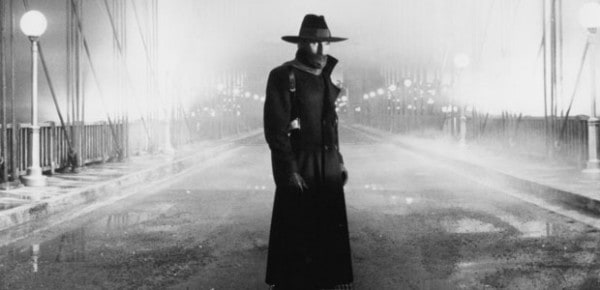 It is, as I noted previously, an inevitability of working with pop culture symbol-sets in magick, that a certain amount of cross-cultural symbolism happens. Often this is condemned by the more purist practitioners as cultural theft; views on this across occulture vary, and the debate is far from over.
It is, as I noted previously, an inevitability of working with pop culture symbol-sets in magick, that a certain amount of cross-cultural symbolism happens. Often this is condemned by the more purist practitioners as cultural theft; views on this across occulture vary, and the debate is far from over.
I generally fall on the side of the debate that says, Yes, respect cultures, don’t nick their ideas and forms willy-nilly — but once a symbol or practice has become part of common culture, it can’t be put back in the box. And if it’s there, you might as well use it. Once those symbols are enculturated, they evolve, and what they become is no longer quite what they were, and this is often a positive evolution.
Oh, that knife…
—Lamont Cranston, The Shadow
Here’s an example from my own praxis: I have two phurbu on my altar. The phurbu (also called a phurba or kila) is a Tibetan ritual weapon for the conquering of evil spirits and the destruction of obstacles.
I have not had a single shred of formal Tibetan initiation.
And, what makes it even worse is that my first exposure to the phurbu as a tool came from the movie The Shadow, and one of those altar pieces is a replica of the one from the movie.
But that film’s use of the phurbu as a symbol actually teaches a valuable mystical lesson in an accessible form. In it the hero, a former drug warlord Lamont Cranston (played by Alec Baldwin), is brought to the path of redemption by a Tibetan Buddhist lama and taught a wide variety of mystical powers which he uses to become the scourge of the New York underworld.
Despite his best efforts as a student, Cranston is unable to master the use of the phurbu (shown as basically a demon in the form of a flying knife), because he tries to impose his willpower over that of its inhabiting spirit. It is only at the climax of the film, when Cranston learns to mentally surrender, to work with the phurbu-spirit instead of trying to forcibly command it, that he learns its true efficacy and use. In short, the film gives a perfect teaching story of the Taoist principle of wei-wu-wei, and I took both that lesson, and the phurbu as a symbol, to heart.
My second phurbu is a cheap stall knock-off bought for a couple of quid in Glastonbury. It’s actually a far more effective tool than the movie prop (and, being cold iron, has certain other magical uses). I’ve used both on many occasions, but at no point have I claimed initiatory status in Bön or other traditions.
Years later, I attended a lecture by Christian Rätsch, who is initiated in Tibetan Buddhism and Bön shamanism: his talk led me to more deeply research the phurbu as a tool and to (hopefully) show respect to the tradition without being a full initiate. Much the same way, I am fairly competent with the Japanese katana and respectful of its traditions without actually being a Shinto initiate.
Just because I can, in my own fashion, use the tools does not mean I can or should claim initiatory status. That would be cultural theft.
In a modern massively-mixed cultural realm such as ours, drawing on many traditions and versions of same within a myriad of fictions, it may well be that many (if not most) of our tools come via similar means. I think it is up to the individual practitioner just how much cultural accretion is acceptable in their own praxis.







